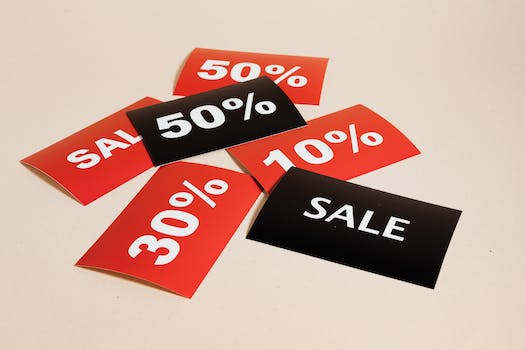How To Make Business Cards
“Create a lasting impression with professionally designed business cards.”
Introduction
Business cards are an essential tool for any professional or business owner. They serve as a quick and easy way to exchange contact information and make a lasting impression on potential clients or customers. In this guide, we will provide step-by-step instructions on how to make business cards that are both professional and effective.
Choosing the Right Design for Your Business Card
Business cards are an essential tool for any professional. They are a quick and easy way to exchange contact information with potential clients or colleagues. However, not all business cards are created equal. The design of your business card can make a significant impact on how it is perceived by others. In this article, we will discuss how to choose the right design for your business card.
First and foremost, it is essential to consider the nature of your business. If you are in a creative field, such as graphic design or photography, you may want to opt for a more visually appealing design. This could include incorporating images or graphics that showcase your work. On the other hand, if you are in a more traditional field, such as law or finance, a more straightforward design may be more appropriate.
Another factor to consider is your brand identity. Your business card should reflect your brand and the message you want to convey. This includes using your brand colors, logo, and font. If you have a tagline or mission statement, consider incorporating it into your design as well.
When it comes to the layout of your business card, simplicity is key. Avoid cluttering your card with too much information or design elements. Stick to the essentials, such as your name, title, company name, and contact information. If you have social media profiles or a website, you can include those as well.
In terms of font choice, it is best to stick to a simple and easy-to-read font. Avoid using multiple fonts or overly decorative fonts, as they can be difficult to read. Additionally, make sure the font size is large enough to be easily read, but not so large that it takes up too much space on the card.
When it comes to printing your business cards, there are a few options to consider. You can print them yourself using a home printer and cardstock paper, or you can use a professional printing service. If you choose to print them yourself, make sure to use high-quality paper and ink to ensure a professional-looking result. If you opt for a professional printing service, make sure to choose a reputable company that offers high-quality printing and a variety of paper options.
In conclusion, choosing the right design for your business card is crucial in making a positive first impression. Consider the nature of your business, your brand identity, and keep the layout simple and easy to read. With these tips in mind, you can create a professional and visually appealing business card that will help you stand out from the crowd.
Essential Information to Include on Your Business Card

Business cards are an essential tool for any professional. They are a quick and easy way to share your contact information with potential clients, colleagues, and partners. However, not all business cards are created equal. To make a lasting impression, it’s important to include the right information on your card. In this article, we’ll discuss the essential information to include on your business card.
First and foremost, your business card should include your name and job title. This information helps people understand who you are and what you do. It’s also important to make sure your name is easy to read and stands out on the card. You want people to remember your name and associate it with your business.
Next, include your company name and logo. This information helps people understand the context of your business and makes it easier for them to remember you. Your logo should be prominently displayed on the card and should be consistent with your other branding materials.
Your business card should also include your contact information. This includes your phone number, email address, and website. Make sure this information is up-to-date and accurate. You don’t want people to have trouble reaching you or visiting your website because of a typo or outdated information.
If you have a physical location, consider including your address on the card as well. This is especially important if you have a storefront or office that people can visit. Including your address can also help people find you more easily if they are looking for your business.
In addition to your contact information, consider including a tagline or brief description of your business. This can help people understand what you do and what sets you apart from your competitors. Keep this information brief and to the point. You don’t want to overwhelm people with too much information on your card.
Finally, consider including your social media handles on your business card. This can help people connect with you on social media and stay up-to-date with your business. However, be selective about which social media platforms you include. You don’t want to overwhelm people with too many options or include platforms that aren’t relevant to your business.
In conclusion, a well-designed business card can make a lasting impression on potential clients and partners. To make the most of your business card, make sure to include your name, job title, company name and logo, contact information, a brief description of your business, and your social media handles. With these essential elements, your business card will be a powerful tool for promoting your business and making connections in your industry.
Selecting the Best Paper Stock for Your Business Card
Business cards are an essential tool for any professional. They are a tangible representation of your brand and can help you make a lasting impression on potential clients or partners. However, creating a business card that stands out can be a challenge. One of the most important decisions you will make when designing your business card is selecting the best paper stock. In this article, we will discuss the different types of paper stock available and how to choose the best one for your business card.
First, let’s talk about the different types of paper stock. There are several options to choose from, including glossy, matte, uncoated, and textured. Glossy paper stock has a shiny finish and is great for designs with bright colors or photographs. Matte paper stock has a non-reflective finish and is ideal for designs with a more subdued color palette. Uncoated paper stock has a natural, textured feel and is perfect for designs with a minimalist aesthetic. Textured paper stock has a unique feel and can add a tactile element to your design.
When selecting the best paper stock for your business card, there are several factors to consider. The first is the overall look and feel you want to achieve. If you want a sleek, modern design, glossy paper stock may be the best choice. If you want a more classic, understated look, matte or uncoated paper stock may be a better option. Textured paper stock can add a unique element to your design, but it may not be suitable for all types of businesses.
Another factor to consider is the durability of the paper stock. If you plan to hand out your business cards frequently, you want to choose a paper stock that can withstand wear and tear. Glossy paper stock is more durable than matte or uncoated paper stock, but it can be prone to smudging or fingerprints. Textured paper stock can also be more delicate, so it may not be the best choice if you plan to carry your business cards in your pocket or purse.
Finally, you want to consider the printing process when selecting your paper stock. Some paper stocks are better suited for certain printing techniques than others. For example, glossy paper stock is ideal for digital printing, while uncoated paper stock is better suited for letterpress printing. If you plan to use a specific printing technique, make sure to choose a paper stock that is compatible with that process.
In conclusion, selecting the best paper stock for your business card is an important decision that can impact the overall look and feel of your design. Consider factors such as the overall aesthetic you want to achieve, the durability of the paper stock, and the printing process when making your decision. With the right paper stock, you can create a business card that not only looks great but also stands up to frequent use.
Printing Options for Your Business Card
When it comes to creating business cards, there are a variety of printing options available. Each option has its own benefits and drawbacks, so it’s important to consider your needs and budget before making a decision.
One of the most popular printing options is digital printing. This method uses a digital file to print the design directly onto the cardstock. Digital printing is a great option for those who need a small quantity of cards or who want to print multiple designs at once. It’s also a cost-effective option for those on a tight budget.
Another option is offset printing. This method uses a printing plate to transfer the design onto the cardstock. Offset printing is ideal for those who need a large quantity of cards, as it’s more cost-effective for larger print runs. It also allows for more customization options, such as using metallic inks or embossing.
If you’re looking for a more unique option, consider letterpress printing. This method uses a printing press to create a deep impression on the cardstock, resulting in a tactile and visually stunning card. Letterpress printing is a more expensive option, but it’s perfect for those who want to make a statement with their business cards.
For those who want to add a touch of luxury to their cards, foil stamping is a great option. This method uses a heated die to transfer metallic foil onto the cardstock, creating a shiny and eye-catching effect. Foil stamping is a more expensive option, but it’s perfect for those who want to make a lasting impression.
No matter which printing option you choose, it’s important to consider the quality of the cardstock. A thicker cardstock will feel more substantial and professional, while a thinner cardstock may feel flimsy and cheap. It’s also important to choose a cardstock that will hold up over time, as a business card that falls apart or fades quickly will not leave a good impression.
When designing your business card, it’s important to keep it simple and easy to read. Use a legible font and avoid cluttering the card with too much information. Include your name, job title, and contact information, such as your phone number and email address. You may also want to include your company logo or a brief tagline.
Finally, don’t forget to proofread your design before sending it to the printer. A typo or spelling error can make your card look unprofessional and may even cost you business. Take the time to double-check your design and have someone else look it over as well.
In conclusion, there are a variety of printing options available for creating business cards. Consider your needs and budget when choosing a method, and don’t forget to choose a quality cardstock and keep your design simple and easy to read. With a little effort and attention to detail, you can create a professional and memorable business card that will help you stand out from the competition.
Tips for Creating a Memorable Business Card Design
Business cards are an essential tool for any professional. They are a tangible representation of your brand and can help you make a lasting impression on potential clients or partners. However, not all business cards are created equal. A poorly designed card can do more harm than good, while a well-designed one can help you stand out from the crowd. In this article, we will provide you with some tips for creating a memorable business card design.
1. Keep it simple
The first rule of business card design is to keep it simple. Your card should be easy to read and understand. Avoid cluttering it with too much information or using too many fonts. Stick to a clean and simple design that highlights your name, title, and contact information.
2. Use high-quality materials
The quality of your business card can say a lot about your brand. Cheap, flimsy cards can make you look unprofessional, while high-quality cards can make a great first impression. Consider using thick cardstock or other high-quality materials to make your card stand out.
3. Choose the right colors
Color can play a big role in the effectiveness of your business card. Choose colors that complement your brand and make your card easy to read. Avoid using too many colors or bright, flashy colors that can be distracting.
4. Make it memorable
Your business card should be memorable and unique. Consider adding a special touch, such as a custom shape or a unique texture. You can also use a creative design or a catchy tagline to make your card stand out.
5. Include your logo
Your logo is an important part of your brand identity, so be sure to include it on your business card. Make sure it is prominently displayed and easy to read.
6. Use the right font
The font you choose can have a big impact on the readability of your card. Choose a font that is easy to read and matches your brand identity. Avoid using too many different fonts or using a font that is too small.
7. Make it easy to contact you
The whole point of a business card is to make it easy for people to contact you. Make sure your contact information is easy to read and includes all the necessary information, such as your phone number, email address, and website.
8. Consider adding a call to action
A call to action can be a great way to encourage people to take action after receiving your card. Consider adding a call to action, such as “Visit our website for more information” or “Call us today to schedule a consultation.”
In conclusion, a well-designed business card can be a powerful tool for any professional. By following these tips, you can create a memorable and effective business card that will help you stand out from the crowd. Remember to keep it simple, use high-quality materials, choose the right colors and fonts, and make it easy to contact you. With a little creativity and attention to detail, you can create a business card that will leave a lasting impression on anyone who receives it.
Conclusion
Conclusion: Making business cards is an essential part of any business. It is important to choose the right design, font, and color scheme that represents your brand. The information on the card should be clear and concise, including your name, title, contact information, and logo. Printing on high-quality paper and using a professional printing service can make a big difference in the overall appearance of the card. Remember, your business card is often the first impression a potential client or customer will have of your business, so make it count.






